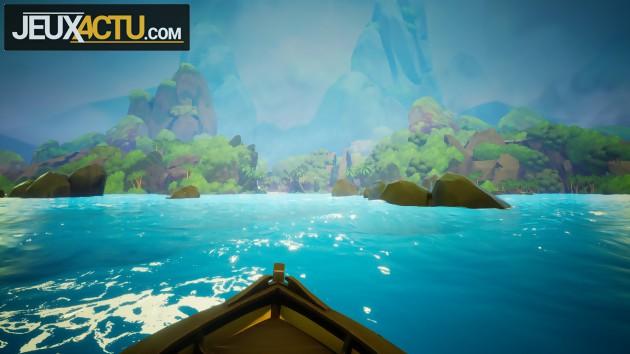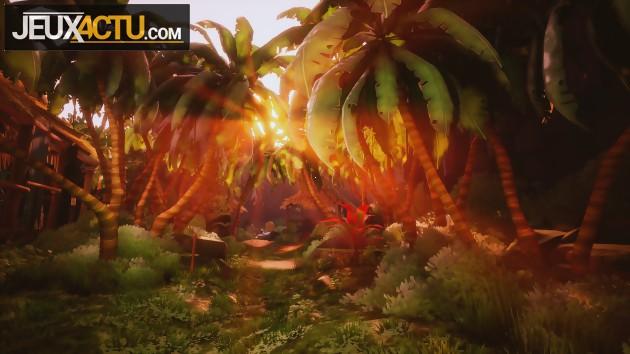
We are in 1934 and Norah Everhart, a drawing teacher by trade, is in the grip of many torments. Since her mother's death, multiple dark spots have appeared on her hands and forearms, fatigue has swept the terrace, and disturbing underwater dreams populate her nights. To top it off, her husband Henry hasn't been heard from for months, even though he was on the other side of the world in search of a cure. Never mind, Norah decides to follow in the footsteps of her dear companion. The adventure therefore begins on a small island located seventy-four nautical miles east of Tahiti. We won't say more about the scenario, because the discovery of the different events is certainly part of the pleasure of the game. Just know that, even if it never turns out to be horrifying, the story is inspired by the myth of Cthulhu and mixes sea creatures, strange black liquid, access of madness and ancient civilization. All of this results in different environments, all of which benefit from extremely attractive art direction. Colourful, lively, shimmering, cartoony just right, but never too flashy, this DA is perhaps the game's greatest success. sun, aurora borealis, lush nature or even mysterious architecture based on diamonds and hexagons. Some very "30s" interiors are also very nicely represented. It is not forbidden to think at times of BioShock, which is not the worst reference in the matter. On the audio side, there is also nothing to throw away since the English voices are very convincing. We still regret the absence of French dubbing even if, fortunately, it is still possible to activate the subtitles in the language of Molière and Aya Nakamura. Finally especially of Molière since the translation turns out to be of good quality!
THE SEA, WHICH WE SEE THINKING...
As far as the gameplay is concerned, we are dealing with a classic Myst-style adventure game. The first thing to do is therefore to observe carefully any object that displays an interaction icon when approached. If some of them can sometimes be picked up, we don't really have an inventory. When the time comes, Norah will automatically use the right item in the right place. Most of the puzzles rely more on observation and reflection than on the use of tools anyway. Norah also has a diary in which she automatically records past events. Convenient to never lose the thread of the story and find some potentially useful information! As a designer, she also uses it, and above all, to keep track of the visual clues collected during the exploration phases. Without it, the puzzles would require the player to take notes in real life. Sometimes sound, often visual and very often "intellectual", the puzzles are generally of good quality, even if rarely original, and cover a wide spectrum of difficulty. If some fold in two minutes, others will leave you speechless for long minutes. Our only regret in this regard concerns the lack of clarity of one or two specific passages. We particularly think of the fourth chapter of the game, which places us in front of a cloud of symbols and combinations of words to interpret. We admit it to you without any shame: after long minutes of fruitless reflection, we passed this test thanks to a "brute force attack", ie by testing all the possible combinations. The height? The enigma is so abstruse that even after having found the solution and having looked at it again, we still have not disentangled the why from the how. The developers are strongly suspected of having abused the “red herring” technique, that is to say of having multiplied the false leads, to such an extent that the good risk of escaping most players.
This particularly frustrating moment is not the only fault of the adventure, which regularly imposes round trips which we would do well (the clues and actions that go well together are deliberately placed in distant places). This problem is all the more significant as the heroine's walking speed is extremely slow. It's very simple: even by activating the running step you still have the impression of moving too slowly. It's hard not to see it as a way of artificially extending the lifespan, which also peaks at six or seven hours. However, the selling price clearly takes this into account since the game only costs twenty euros. And it is even possible to enjoy it "free" for Game Pass subscribers. Besides, this is certainly the best way to approach the game. month.



























